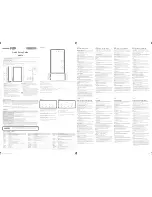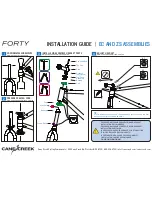
PNI Sensor
PlacePod User Manual V2
Page 6 of 15
SYSTEM FUNCTIONAL ELEMENTS
2
2.1
SYSTEM OVERVIEW
The diagram below shows the primary elements of the PlacePod system architecture. A brief
description of these functional elements follows.
Figure 2-1: PNI Parking Solution - Functional Elements
•
PlacePod Sensor – The PlacePod sensor
is a LPWAN-compatible vehicle detection device. It
is built with PNI’s high-performance magnetic sensor and vehicle detection algorithms that
accurately detect the presence or absence of a vehicle in a parking space. Each sensor has a
unique ID for easy provisioning, tracking and management.
•
Gateways –
Each PlacePod device communicates to the gateways set up to receive their
signals. The gateways collect the signals from the PlacePod devices and send the infor-
mation on to the Network Service. The number of gateways required depends upon the size
and environment of the parking areas covered by the parking system.
•
Network Service –
The Network Service collects the signals from the gateways and com-
municates this data to the Parking Application. The choice of provider for the Network Ser-
vice is a key integration decision determined by the scope of the project.
•
Parking Application -
A Parking Application is a dashboard for visualizing and managing
parking data, including installation and verification, diagnostics, monitoring, and reporting.
The choice of a Parking Application will determine the customer’s user experience and can
be part of a stand-alone service or larger Smart City applications. Customers can use PNI’s
parking application, or a third-party application, to manage their parking data.
Actility, machineQ, Senet,
The Things Network, other
public & private networks
PlacePod Sensor
LoRa
Gateway
Network Service
Parking Management Application

































